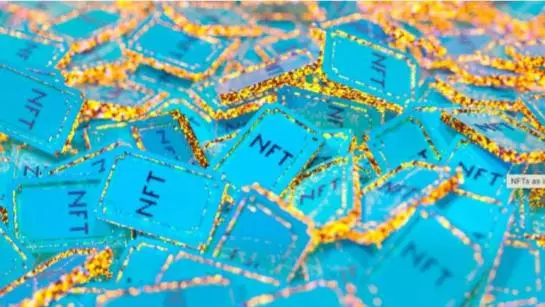

Antiques to antics: How good an investment tool is an NFT?
Non-fungible tokens are touted as a means to safeguard anything — from a tweet to a piece of art — from imposters; they could, in fact, be just a narcissist’s tool, and an unsafe one at that

NFT stands for ‘non-fungible token’, which is a unique digital asset that has proof of ownership and verification of authenticity held in the blockchain. Bitcoin, the quintessential cryptocurrency, is fungible as it is also meant to be a medium of transaction settlement but each NFT is unique, as each work of art is unique, which makes its non-fungible character absolutely essential.
An NFT can be digital art, real estate, collectibles, event tickets, website domains or even tweets. It may not be an oversimplification to liken an NFT to dematerialised (demat) shares which exist but in digital form, beyond the reach of forgers and incapable of getting mutilated.
Personal Finance: A simple, 3-step approach to build a long-term investment portfolio
Demat shares have changed the way people invest. They have made buying and selling on the stock market quick, and prevented loss of shares due to theft, damage, etc. For people who invest in art, real estate and so on, can NFT offer similar benefits?
Art, and not art
On March 11, 2021, the BBC reported how auction house Christie’s sold a digital-only artwork for $69 million. Far from the usual sculpture or painting, the new owner of the art work got a unique digital token, the NFT whose underlying asset of course is the artwork.
While this is an example of art collectors nursing the safety of their collections assiduously to keep impostors and charlatans at bay, predictably the trivialisation of NFT in the hands of megalomaniacs and narcissists started almost immediately.
“Just setting up my twttr” — the first tweet by Twitter founder Jack Dorsey went live for sale as an NFT and fetched him a mind-blowing $2.9 million. It has, however, touched its nadir at $132. The sale of his baby to Elon Musk perhaps accelerated the downhill course of his first tweet. More importantly, wisdom perhaps dawned on the besotted NFT aficionados that putting such a high valuation on an inane tweet was a gushing blunder.
Personal Finance | GST on rent: Has Centre allowed hotels to step on landlords’ toes?
Former POTUS Donald Trump joined the NFT bandwagon in guises such as a superhero, astronaut and Nascar driver. He promoted the ‘limited-edition cards’, saying one could “make a great Christmas gift”. There were 45,000 of the cards, available for $99 each. Even Republicans were not amused by Trump’s antics.
Closer home, our own Amitabh Bachchan, the superstar of yesteryears and celebrity in perpetuity, morphed his father Harivansh Rai Bachchan’s work Madhushala into NFT by recording the poems in his own voice that reportedly got him a fabulous $420,000 in November 2021.
Plummeting fortunes
The fortunes of cryptocurrencies have plummeted after the initial euphoria. So have the fortunes of the crypto NFTs. It is for the legal experts to examine if blockchain technology that underpins NFTs can confer unchallengeable title and ownership of the underlying work of art to owners of the coin. In other words, there is no guarantee currently that the buyers of NFT will not be upstaged by a challenger under the copyright law.
Time was when antiques, paintings, sculptures and other artefacts commanded mind boggling and staggering valuations in the art market. Cynics have always questioned such valuations and wondered if ill-gotten money was being laundered at the end of the day.
Personal Finance: Here’s what the common man can do to combat high inflation
TMC leader Mamata Banerjee was the object of such cynicism when she got ₹9 crore for 300 paintings of hers. Likewise, ripples were caused when the Yes Bank founder Rana Kapoor revealed that he was arm-twisted into buying an MF Hussein painting by then Petroleum Minister Murli Deora for ₹2 crore, and the amount was used for Sonia Gandhi’s treatment in the US. Even Bitcoin at the height of its overweening valuations was taunted as a handmaiden of crooks out to launder their ill-gotten wealth.
Vulnerable to attack
NFT, while arguably making ownership of arts foolproof and tamper-proof and creating a vibrant market for their underlying assets — namely, paintings, sculptures and even inane tweets — has left its flanks vulnerable to attack. Dematerialisation of shares has worked wonders in the market but dematerialisation of antiques has sadly given rise to antics in the rarefied world of NFTs.
In the light of this, an investor in NFTs has to go for it with his eyes wide open, and risks well hedged.


